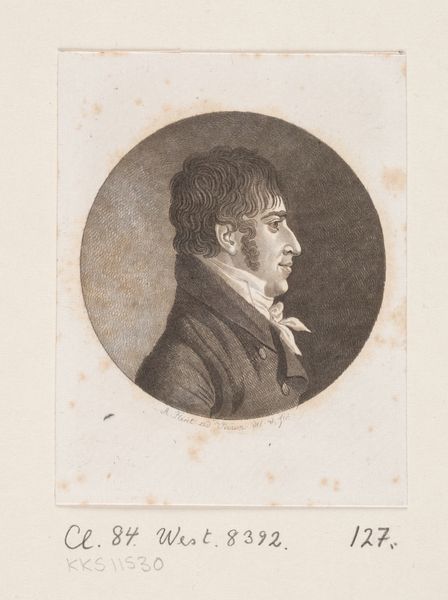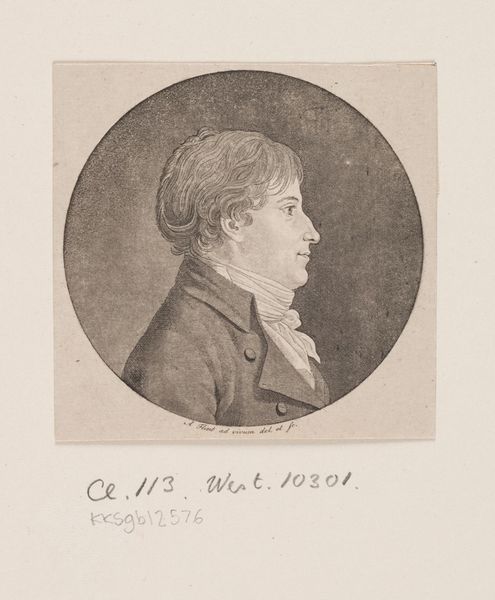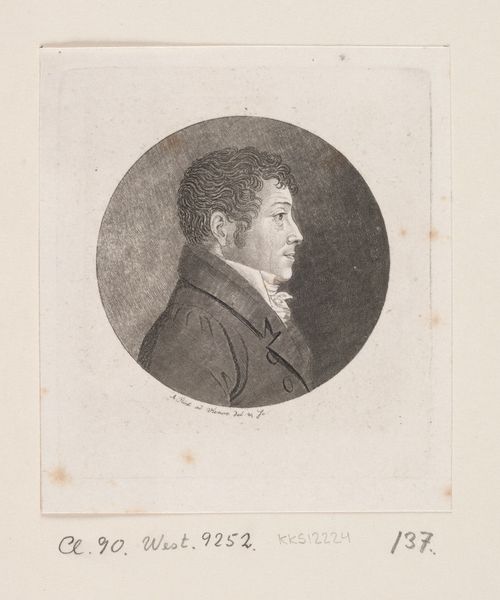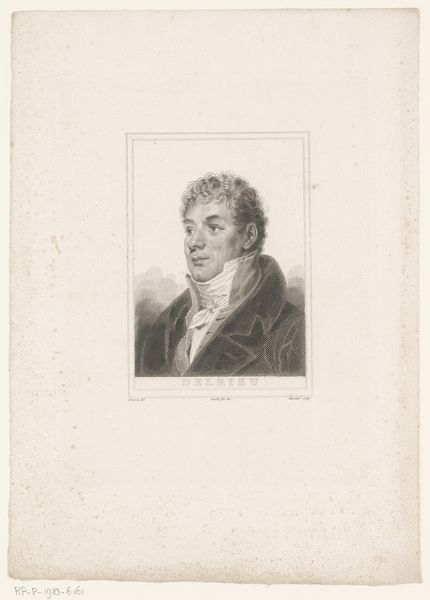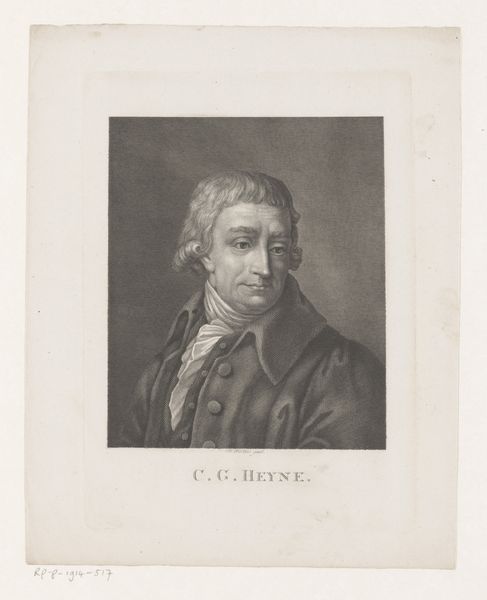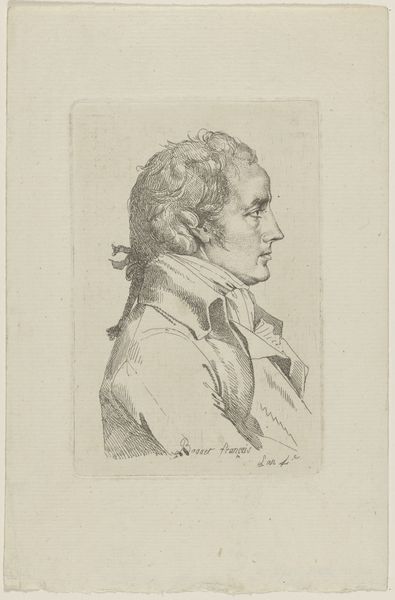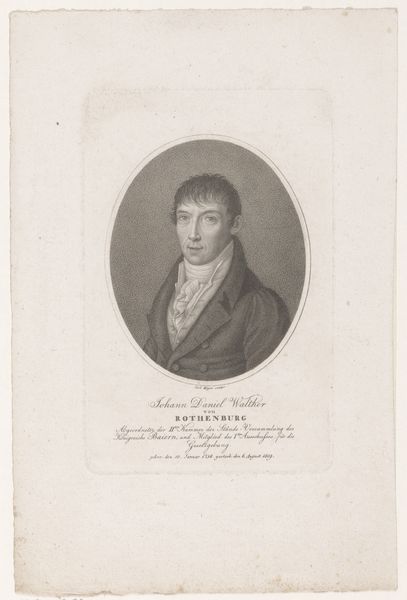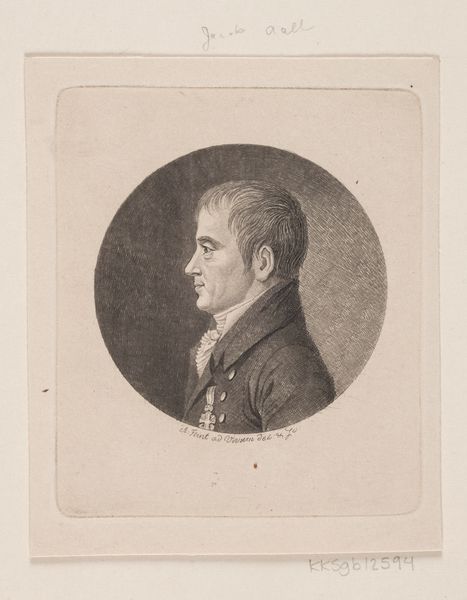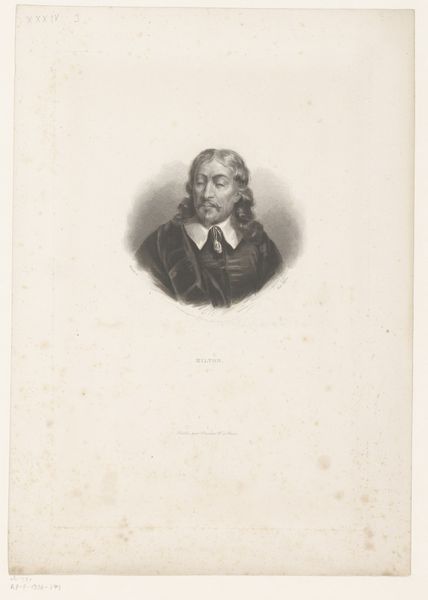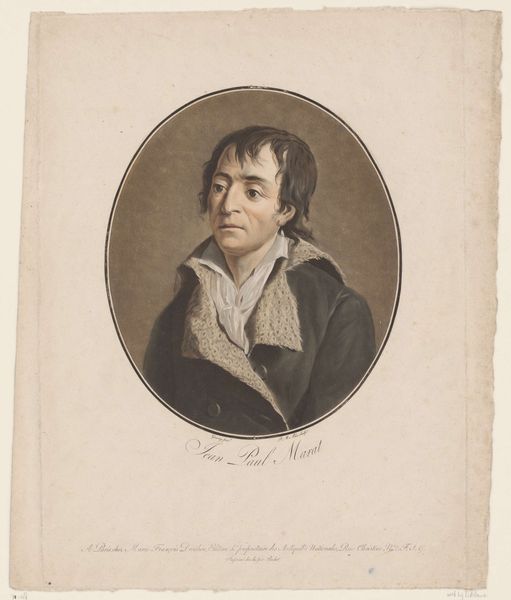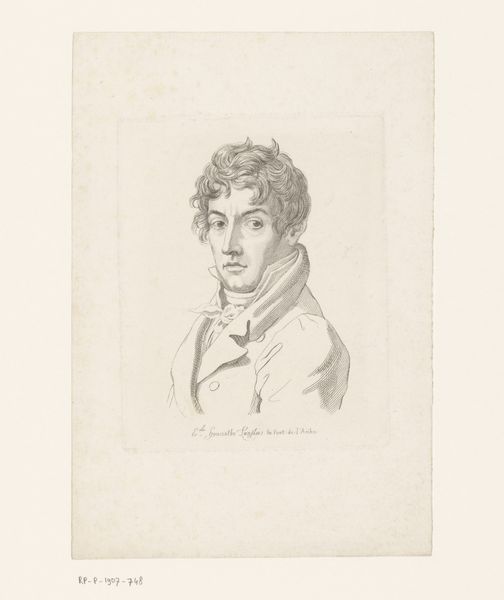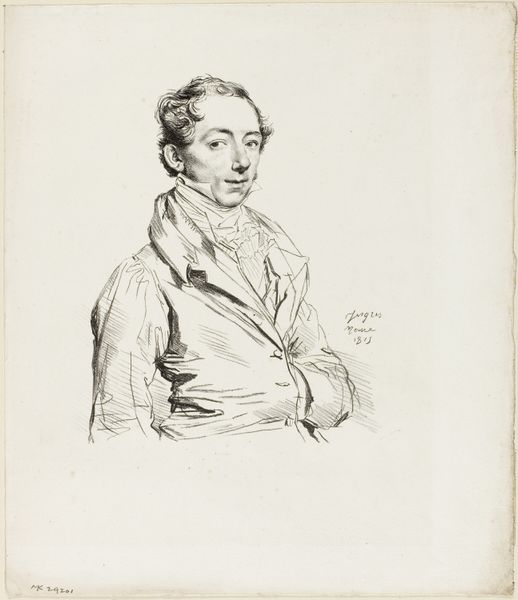
print, engraving
#
portrait
# print
#
engraving
#
realism
Dimensions: 60 mm (None) (billedmaal), 80 mm (height) x 71 mm (width) (bladmaal)
Andreas Flint created this portrait of J. F. Prehn through engraving, a process of carving into a plate, in the late 18th or early 19th century. At this time, Europe was still in the throes of aristocratic power structures, visible here in the high-necked shirt and tailored jacket of the sitter. What does it mean to capture a likeness, and who is deemed worthy of such representation? This image reflects a very specific class, gender, and probably race. The detail and care taken in rendering Prehn's features suggest an elevated status. The soft lighting creates an intimacy, while the circular frame evokes the tradition of portrait medallions celebrating important figures. Flint positions Prehn as an individual of note. As you gaze at this image, consider who is missing from these historical records. Whose stories remain untold, unseen in the halls of museums? Art can serve as a mirror reflecting societal values, but also as a window into alternative narratives.
Comments
No comments
Be the first to comment and join the conversation on the ultimate creative platform.
